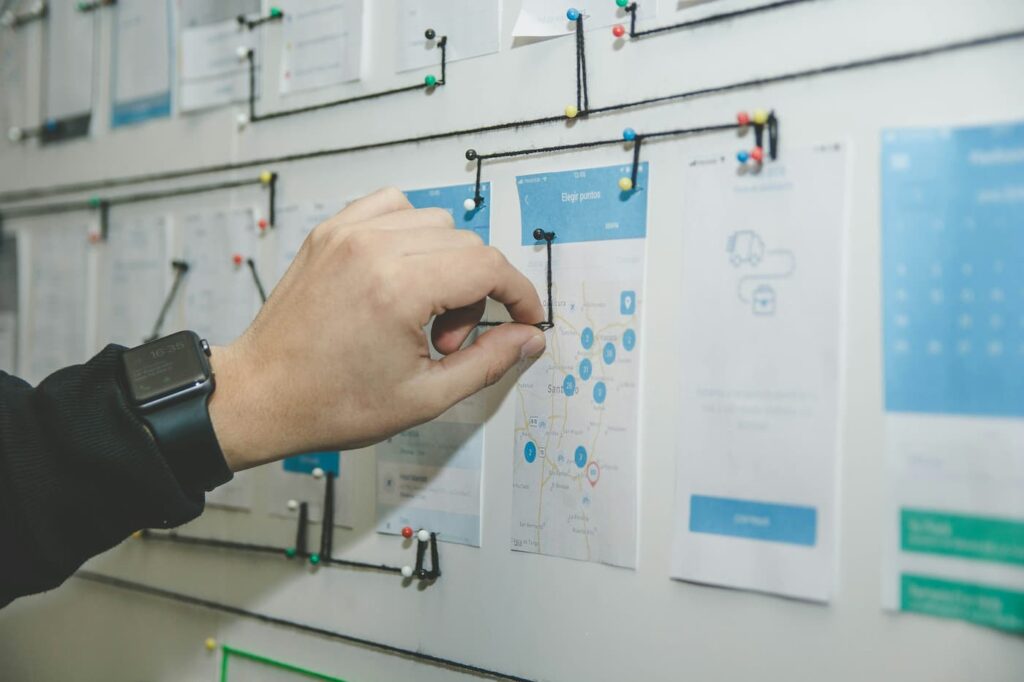When a customer chooses to buy your product instead of a competitor's at a similar price, that's customer loyalty.
It's defined as a long-term emotional bond between you and your customer. When a customer has a favorable experience with your company, they are more likely to become loyal, which helps build trust.
Customers who trust a brand spend more time and money with it and are more likely to recommend it to other people. This benefits all the companies' efforts, from sales and marketing to product and service development.
To take advantage of customer loyalty, companies employ programs that help them nurture relationships between their business and customers.
So in this article, we will go over what customer loyalty programs are, how they work, and their various types. You will also learn how to create your own customer loyalty program and how to calculate its costs. We end the article with examples of some of the best loyalty programs out there and how they turn customers into loyal fans.
What Are Customer Loyalty Programs and How Do They Work?
While there are different types of customer loyalty programs, the core mechanism is the same - i.e., rewarding the company's best customers. These programs are designed to reward customers that frequently interact with and purchase from a company and encourage new customers to become regulars. Customers prefer rewards programs that offer cash value, relevance, choice, aspirational value, and convenience.
These rewards can include financial incentives such as cashbacks, discounts, coupons, and free shipping that offer the customers a better deal than when they are not part of the program. This makes customers feel like smart buyers as it helps them save money on their regular purchases.
The incentives can also be experiential ones, including:
- early access to product sales,
- new product samples,
- members' clubs,
- VIP services, and so on.
Experiential incentives create a sense of exclusivity for members and elevate customers' experiences with the company, which makes them feel important and appreciated.
Customers who have amazing experiences with a company can become brand advocates who help bring awareness to brands and create a positive brand image through positive word-of-mouth.
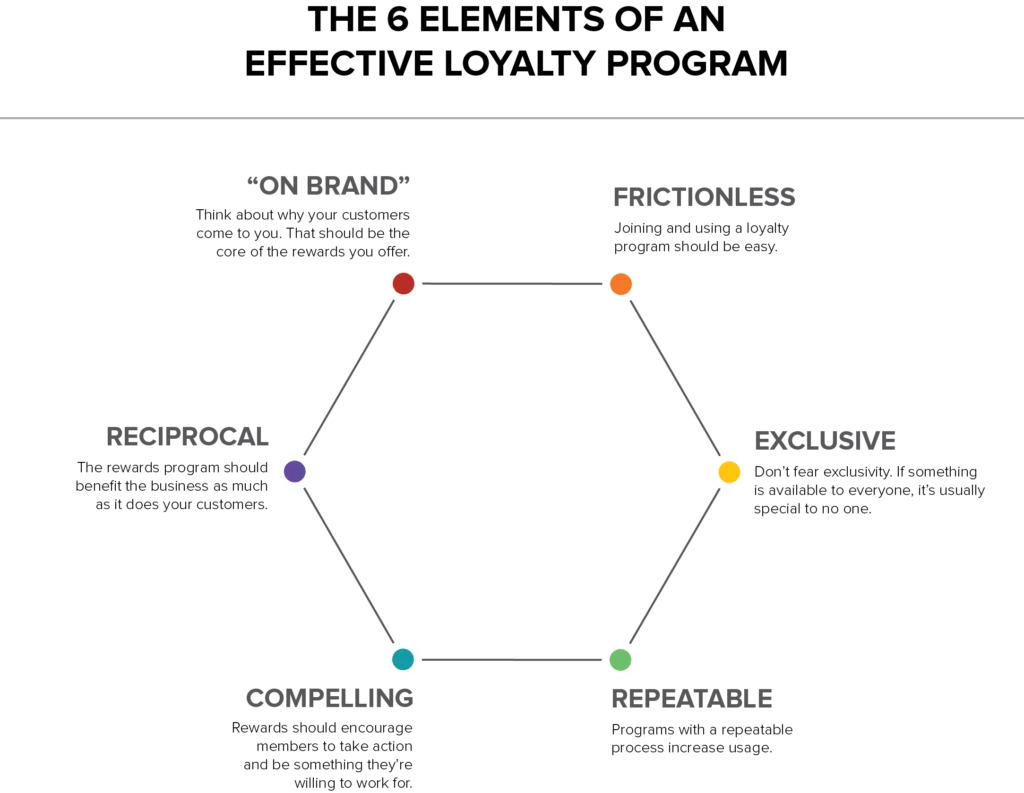
How Can Customer Loyalty Programs Help Your Business?
Customer loyalty directly benefits a company's revenue as it helps the core essence of what a business is all about: customer retention.
Research shows that converting a new customer can cost you up to five times more than an existing one. But it also helps other aspects of a business, some of which we explain below.
1- Increased sales and profits
Customers spend more money with a company that they trust. Trust improves customers' shopping habits and reduces resistance to trying new products or services from the same brand.
Also, according to research by Frederick Reichheld of Bain & Company (the inventor of the net promoter score), since a company's loyal customers spend more with it and cost less to convert, a mere 5% increase in retention can increase profits by 25 to 95%.
Also Read: 30 Ways to Actually Increase Sales Online - Proven Methods
2- Reduced customer acquisition costs
Customers that have a positive experience with a brand's loyalty program are 73% more likely to recommend it to other people. This becomes more significant when we learn that 90% of people trust word-of-mouth recommendations, even from strangers. Therefore, a loyalty program that converts regular customers into brand advocates willing to promote your products or services for free can significantly lower your customer acquisition costs.
Customers that have a positive experience with a brand's loyalty program are 73% more likely to recommend it to other people
Also Read: 3 Ways Direct to Consumer Brands Get New Consumers
3- It creates a sense of community
Creating a passionate community of customers is one of the best ways to keep them coming back. Customers connect emotionally with companies that go above and beyond in serving their loyalty program members. Additionally, the enhanced exclusivity and personalization that programs offer to customers make them feel special and appreciated. Customers feel that they belong to a community where their needs are recognized and satisfied in the best possible ways.
4- It works as a feedback pool
Many people sign up for loyalty programs because of the free samples. Product developers or retailers can take advantage of this by offering samples of new products to program members and asking for their feedback. The company can then use these insights to make informed decisions.
Also Read: Product Sampling; Tried and Trusted Method to Conduct Consumer Insights Research
5- Valuable data collection
Customer loyalty programs can be a great instrument for gathering important data about customers. The data that members share with the company can be used to offer personalized services and incentives.
6- Promotes the brand
As we mentioned above, customers that feel appreciated by a brand can become brand advocates that promote the brand for free. This is especially important for smaller companies and startups where marketing budgets are limited. The most effective form of brand promotion for your company can be word-of-mouth marketing, and a good loyalty program helps you do just that.
Also Read: Basics Of Brand Activation: What Is It, And Why Is It Important?
What Are the Different Types of Loyalty Programs?
The first uses of loyalty programs go back hundreds of years. People have been rewarding their frequent customers in different ways for a long time. However, customers' needs and expectations have changed drastically ever since. In today's world, customers are bombarded with different options, and programs that attracted them a few decades ago may seem pointless to them now.
Let's look at some of the main types of loyalty programs being used today and see how each of them works.
A) Points-based programs:
Point-based programs are the most common methodology used in this area and often offer transactional benefits to customers. Companies with this loyalty program reward customers with points when they purchase from or interact with them. These points can be redeemed for discounts or freebies on the next purchase or once a target has been reached.
These programs are simple to understand, free to sign up for, and, therefore, have a low entry barrier. So, they work well as opt-ins to collect data from customers.
B) Cashback programs:
Similar to points-based programs, cashback programs require an initial transaction to offer benefits on subsequent purchases. With this method, the customer is returned a small percentage of their purchase as credit that they can spend on their next visit.
The cashback model is easy to understand and track, which makes it a popular method among retail businesses.
C) Tiered programs
In a tiered loyalty program, customers are put in different tiers based on how much they have purchased in a certain period. Once a consumer has spent a certain amount with the company, they get access to new perks and privileges. As a result, clients are enticed to spend more by receiving incentives for each transaction. This program keeps customers engaged as there are new perks to unlock, with top-tier customers feeling acknowledged and appreciated for their purchases.
D) Coalition programs
"Coalition loyalty", also known as "partnership programs" and "shared loyalty programs", is a type of loyalty marketing in which two or more businesses join forces to serve each other's customers. Customers can earn points at any member company and then redeem them at another participating company, giving coalition loyalty program members more flexibility and a wider range of incentives.
This method allows the partner companies access to each other's customers, resulting in a larger customer base. Also, this model reduces the program's setup and promotion costs for each individual company as the expenses are divided between the partners.
E) Premium (paid) programs
A premium program is one that requires the members to pay an upfront fee for benefits that they can use right away. Instant access to benefits is a huge plus in today's fast-paced world. The premium loyalty program must provide a premium experience as it's a paid model and customer expectations are way higher. Therefore, it's much more complex when it comes to design and execution.
The upfront fee may prevent a large portion of your customers from signing up. However, the point of a premium loyalty program is not for everyone to come along. The point is to give your best customers the best experience you can offer.
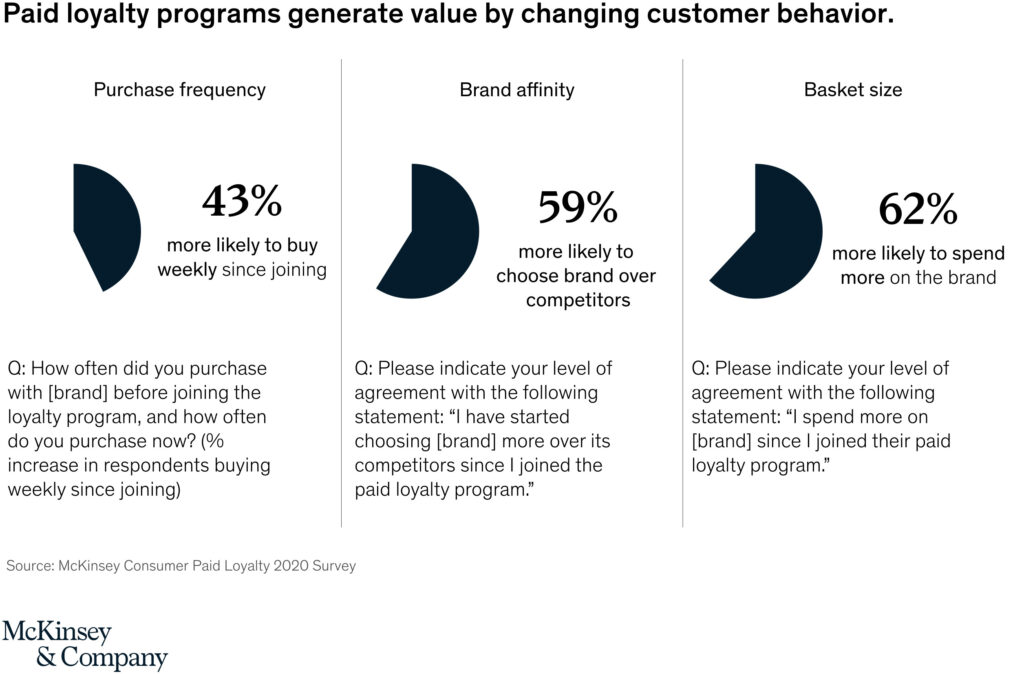
F) Gamified programs
According to Gartner, "Gamification is the use of game mechanics and experience design to digitally engage and motivate people to achieve their goals."
When we apply game-like principles such as contests or challenges to loyalty programs, we create a more engaging and fun experience for the customers; making the tasks more likely to be completed.
When designing a gamified program, avoid making the challenges too daunting or the purchase requirements unattainable. The point of a gamified program is for customers to have fun, not to feel excluded or threatened.
G) Value-based programs
A Value-based program creates meaningful connections with customers by financially supporting various social causes that they care about. Value-based programs highlight the social and communal efforts and values of a brand. A company can do this by donating a percentage of its revenue to a charity or welfare program that resonates with its brand's and customers' values. Customers can even be given a choice to make donations to charities of their choice using the points they've earned from their purchases.
H) Hybrid programs
Hybrid programs are ones that combine elements from two or more types of programs. This approach allows unlimited customization and creativity, which helps your loyalty program be unique, enticing, and fun.
7 Steps to Creating an Effective Loyalty Program Marketing Strategy
Although there is no one way to create a loyalty program, there are certain elements that are necessary for doing it successfully. Here are seven important steps you need to take to create an effective loyalty program that your customers will love.
Step 1: Think about your brand values
Step 2: Establish your goals
Step 3: Find out what your customers need
Step 4: Make it free, paid, or both
Step 5: Define loyalty levels… or don't!
Step 6: Design your rewarding system
Step 7: Come up with a great name
The Cost of a Loyalty Program
A loyalty program marketing strategy has two types of costs: development/maintenance costs and rewards costs.
Development/maintenance costs can vary based on how you approach setting up the process. Your options are:
- Have your in house team design and execute your program
- Hire a third party company to do it
- Use a pre-built customer loyalty software
These costs come from the manpower you need to design and execute the program, marketing campaigns to promote it, and the technology you need to run it on. Development/maintenance costs are easier to predict and calculate.
Rewards costs result from:
- Coupons, discounts, and cashback deals
- Additional services
- Free samples, gifts, and giveaways
- Early access to sales and new products
- Members-only content
This type of cost is harder to predict and track and varies widely depending on the membership size and the rewards types.
5 Brands That Changed the Game with Their Customer Loyalty Programs
There is a myriad of customer loyalty programs across different industries out there. However, in this article, we go over 5 of the unique and creative customer loyalty programs that took this marketing and branding strategy to the next level.
Related video: 10 Innovative Customer Loyalty Programs (And How to Start Yours)
1- Beauty Insider - Sephora
The cosmetic brand Sephora's "Beauty Insider" is a highly popular example of a customer loyalty program with over 25 million members. It combines point-based rewards with a tiered system that allows customers to unlock new perks and benefits by purchasing more.
Beauty Insider offers a range of options to members in exchange for redeemed points:
- Discounts and gift cards that offset the high prices of the brand's products
- More exclusive options, such as limited edition products
- In-store tutorials
- Free samples
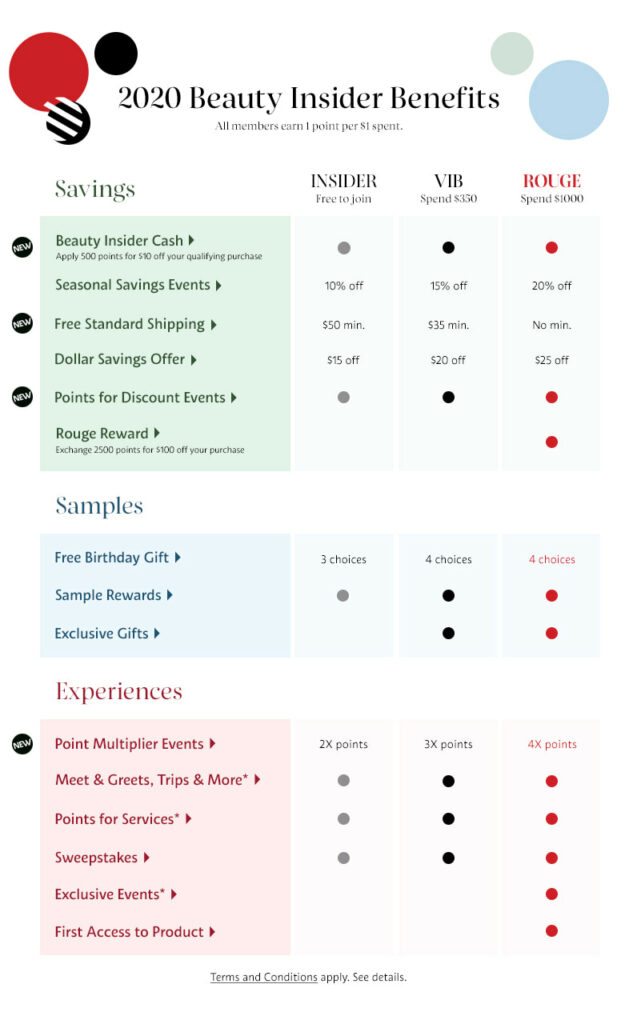
2- Amazon Prime - Amazon
Amazon Prime is the online retail giant's paid loyalty program with a flat annual fee of over $100. It emphasizes amazing customer service by offering unlimited free 2-day shipping with no minimum purchase for millions of products on the Amazon online store.
If that's not good enough, Prime members can save money on purchases from other Amazon services and brands, such as Whole Foods stores and Amazon streaming services
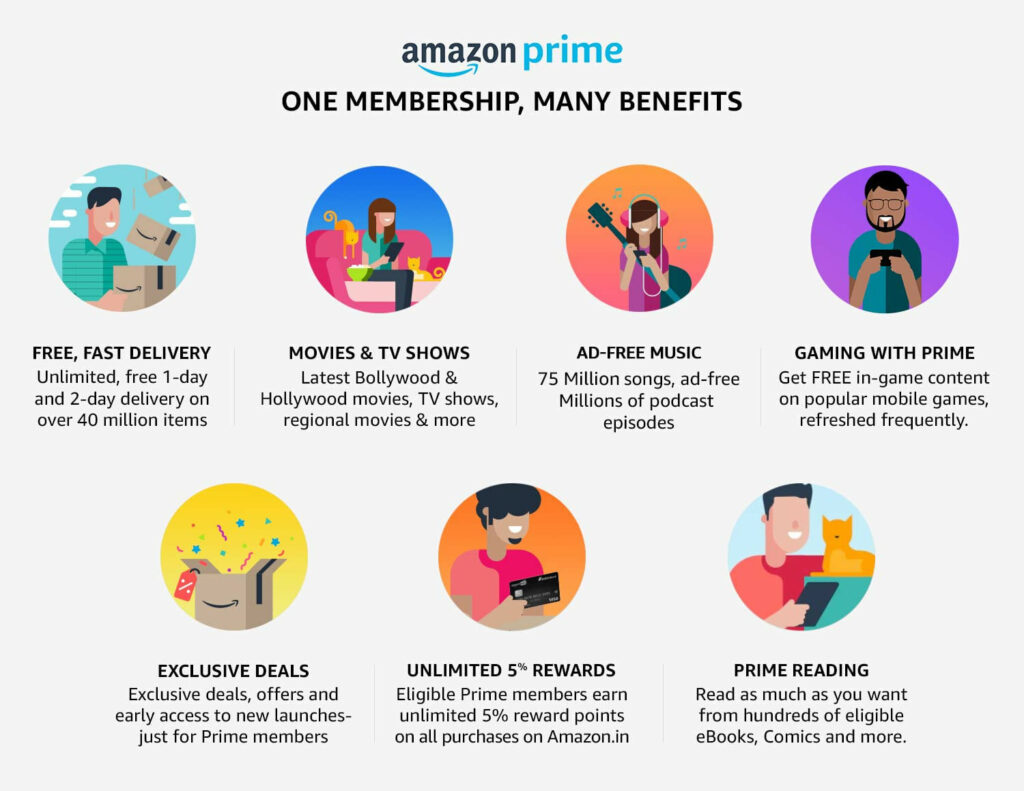
3- Starbucks Rewards - Starbucks
Starbucks is one of the first brands to base its loyalty program on a mobile app. Starbucks Rewards is a 2-tiered point-based program that rewards its members with "Stars" for installing and using the app for their purchases.
Members can then redeem their stars for discounts and free foods and beverages. The app allows Starbucks to collect and track valuable data on its customers' purchasing habits and preferences, which the company can use to enhance its products and services.
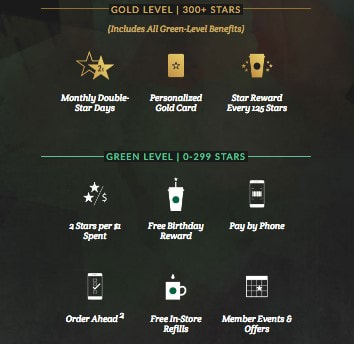
4- XPLR Pass - The North Face
The outdoor gear and apparel brand, The North Face, offers one of the most unique loyalty programs. XPLR Pass is designed to build a loyal community of outdoor enthusiasts by offering the members unique, curated experiences that emphasize the brand's and its customers' values.
The program is a points-based program that rewards a variety of activities besides purchases:
- Check-ins at national parks, national monuments, and North Face stores
- Bringing reusable bags when shopping in stores
- Referring friends
- Downloading the app
- Completing surveys
XPLR Pass offers several benefits to its members, such as:
- Members can trade in gently used gears in exchange for gift cards
- Members can return their purchased gears in case they change their mind within 60 days
- Early access to limited edition collections and new products
- Product field-tests
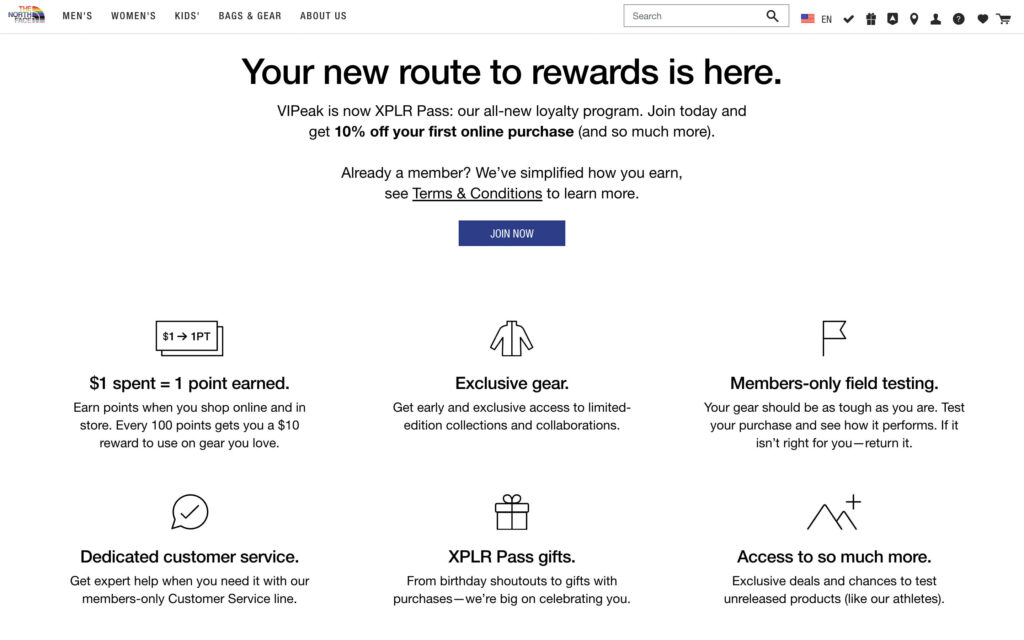
Also Read: Experiential Marketing: Taking Your Business to the Next Level
5- DSW VIP - DSW
In 2018, DSW VIP replaced Designer Shoes Warehouse's previous program, DSW Rewards, which was the company's main loyalty marketing strategy for about three decades. At the time, it had over 25 million members.
The new 2-tiered point-based loyalty program offers an online system that eliminates the need for loyalty cards.
The members get points for activities such, as shopping, sharing their birthdays, writing reviews, and donating their old shoes.
Depending on a member's tier, the program incentives are:
- A 5% or 10% cashback on every purchase
- $5 or $10 store credit for birthday gifts
- Unlimited free shipping.
DSW VIP also comes with an email campaign that sends members personalized content to keep them engaged with the program.
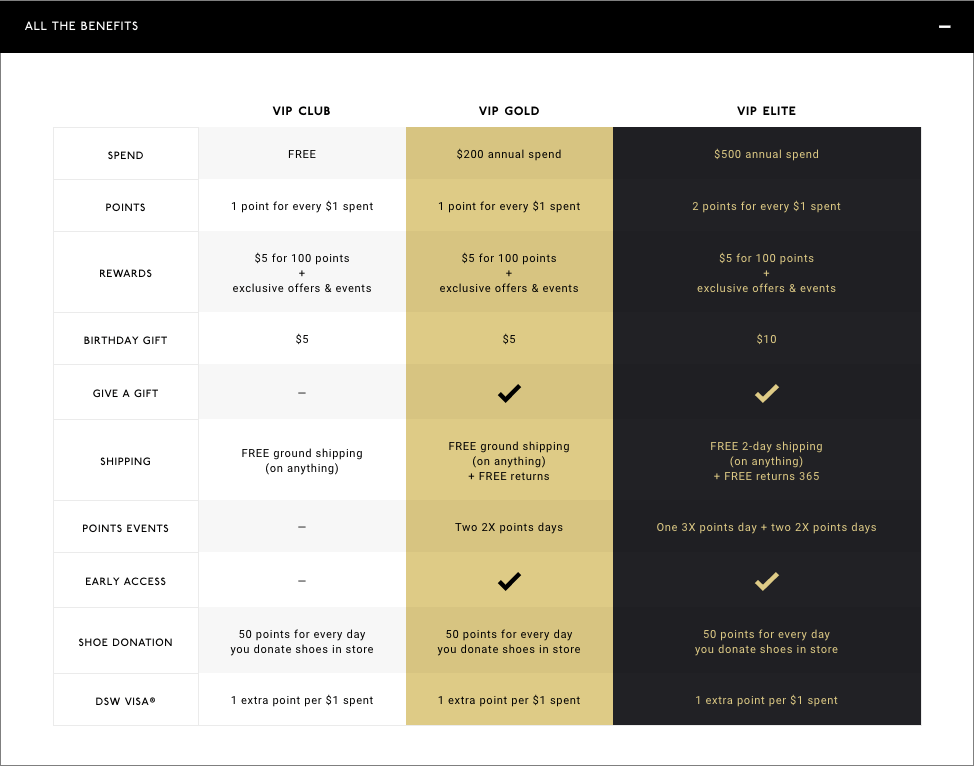
Frequently Asked Questions
- Do loyalty programs work?
It depends! When done properly, loyalty programs can be an effective tool in bringing customers back to make repeat purchases.
- Why have loyalty programs become so popular with marketers?
Here are some reasons why 63% of high-performing marketers use loyalty programs: a. Increased customer retention; b. Valuable customer insights; c. Reduced marketing costs; d. User-generated content, i.e., reviews and social media mentions.
- How can you improve customer loyalty programs?
a. Offer both transactional and experiential incentives; b. Use gamification; c. Optimize for personalization; d. Reward social media engagement; e. Make your offers exclusive.
- Are loyalty programs worth it?
When designed and executed correctly, loyalty programs are can be very effective at increasing customer retention. Research has shown that a 5% increase in customer retention can result in a 25% to 95% increase in profits.
- Why are customer loyalty programs important?
Loyalty programs are important because they increase sales and profits, help gather customer data, reduce marketing costs, and help strengthen the emotional connections between consumers and brands.
- Can non-tiered customer loyalty programs be profitable?
How a loyalty program is designed, the value it offers to customers, and its cost efficiency determine whether it will be profitable or not. There are many examples of companies with profitable non-tiered loyalty programs, such as Amazon Prime and Starbucks Rewards.



